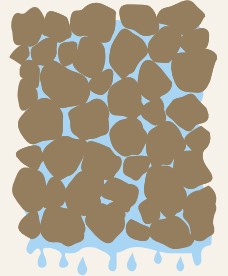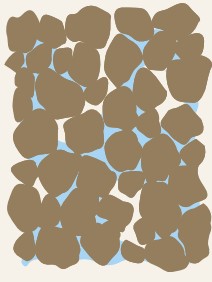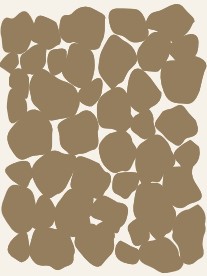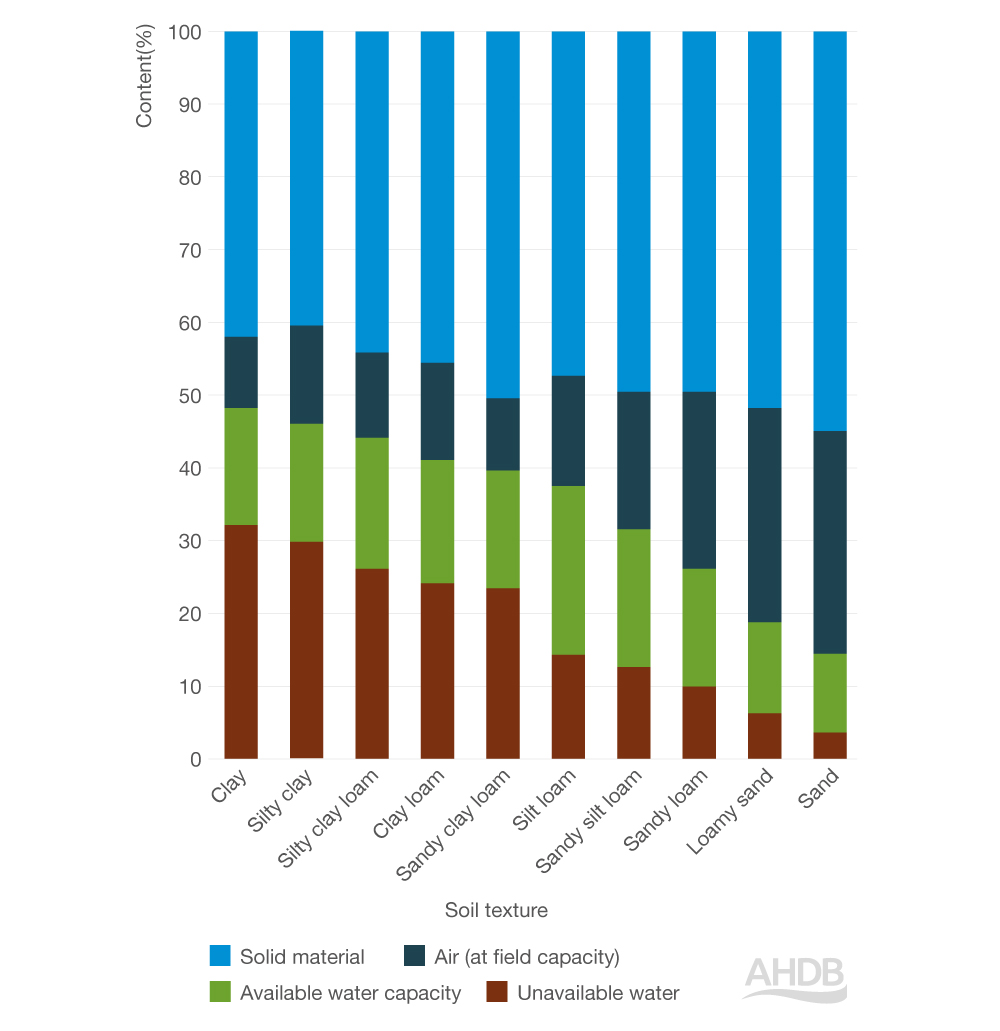- Home
- Knowledge library
- Soil texture and water status
Soil texture and water status
Moisture state is highly influenced by soil texture. For example, water moves relatively slowly through clay soils, clay layers and compacted layers.
Soil water status
Soil water status impacts drainage and water availability for plants.
Saturation
All pores are filled with water (i.e. no air in the soil). Gravitational water is lost.

Field capacity
Reached following heavy rain, when soil has drained for about 48 hours, air has re-entered the soil, and no more water is lost through gravitational drainage.
Soils are usually at field capacity or wetter during winter.

Soil moisture deficit
Occurs when more water is removed by evaporation and plant transpiration (evapotranspiration) than is added through rainfall and irrigation.
When there is a soil moisture deficit, soil will dry out. This is the key soil measure used in irrigation scheduling.
Soil moisture deficits are common in the UK in spring and summer.
Permanent wilting point
Soil dries progressively until only the smallest pores contain water. Roots are unable to draw on this water, causing leaves to wilt. Plants may recover at night but, when damage is permanent, the soil has dried to the permanent wilting point.
Some soil types (especially clays) still contain up to 20% water at the permanent wilting point.
It is uncommon for soil to reach permanent wilting point in the UK.

Soil texture and water content
Soil is rarely at the same moisture state across all its layers.
Knowing the water content of the soil alone is not enough, as the soil texture and structure affects pore sizes and their connectivity.
For example, if the soil is at 29% water content:
- Very sandy soils are wetter than field capacity and drainage will occur
- Clay loam soils are in an ideal condition for plant growth
- Heavy clay soils could be at permanent wilting point
Soil texture affects the available water capacity (AWC)

Available water capacity
The water in soil between the moisture content at field capacity and that at permanent wilting point is available to crops. This is known as the available water capacity.
Optimal pore size
Total soil pore space does not vary significantly between sandy and clay soils – but the type of pores present changes markedly. This affects both the available water capacity and water movement.
Roots struggle to use water in pores smaller than 3 μm, and in the smallest pores (less than 0.2 μm) water is held so tightly that it is unavailable to plants.
The most readily available water is stored in pores in the range 3–30 μm. This is also the optimum range of water availability for such soil microbiological processes as mineralisation of nitrogen, phosphorus and sulphur from organic matter.
In terms of soil health management, the aim should be to optimise the number of pores in this size range by avoiding compaction and encouraging good aggregate formation.
Improving soil structure, for example, by increasing soil organic matter content, can markedly improve the available water capacity.
Estimating water content
One way to estimate the water content of lighter soils is to push an auger or a cane into the ground – the wetter the soil, the lower the strength of the soil and the easier it is to push in.
Useful links
Read more about soil porosity and soil structure
Learn how to easily assess soil moisture
Read the Principles of soil management guide
If you would like to order a hard copy of Principles of soil management, please use our online order form or call 0247 799 0069.
.jpg)

